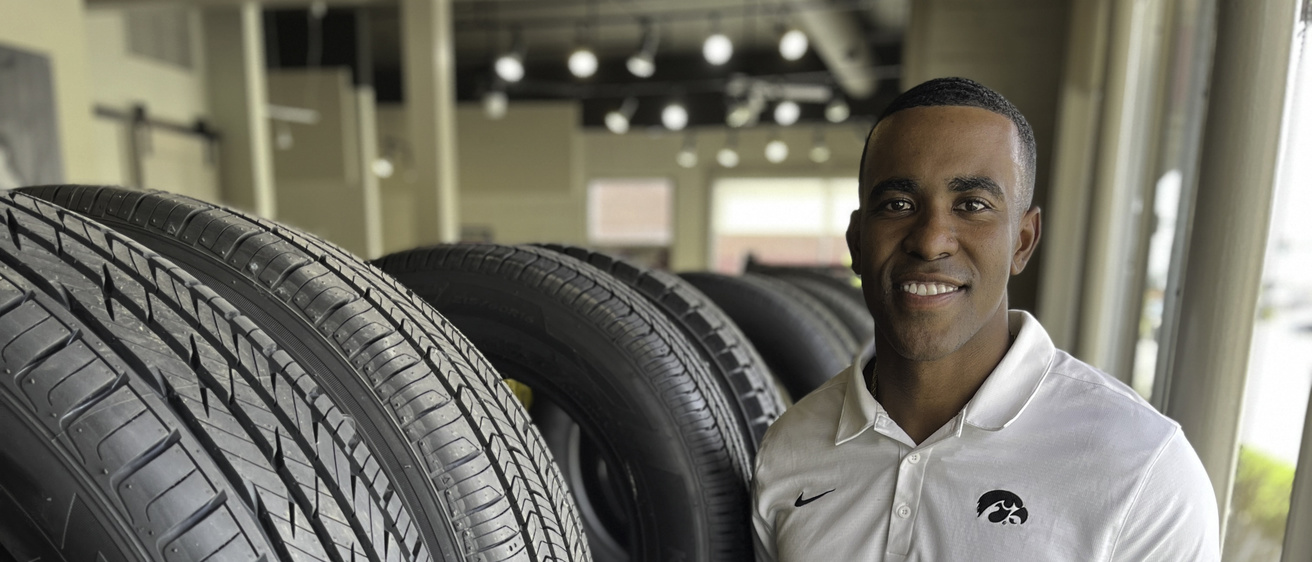Formula One racing was for many years the forgotten child of automobile racing in the United States.
The European-based circuit has always been well behind NASCAR and IndyCar in popularity. But a recent Netflix documentary series has triggered an explosion of interest for F1 and attracted thousands of new fans in the United States.
Like Jason Woodson.
Woodson, a student in Tippie’s Master of Science in Business Analytics program, was not much of a racing fan until this summer, when he was selected for a research fellowship that focused on the importance of tire strategy in an F1 racing team’s success. He was encouraged to consider the project by his advisor, Ann Campbell, professor of business analytics and a big F1 fan.
“I’ve wanted to explore new areas of analytics and a project with Jason seemed like a great place to start, since he is a sports fan and wants to pursue a career in sports analytics,” said Campbell. “I haven’t seen as much analytics about F1 as there is about football, basketball, and other sports, but clearly, there are many strategic decisions driven by data. One big decision that is made by every team in every race is what tires to use and when to switch them, so it seemed like a great place to start.”
Woodson says tire usage is critically important in a driving team’s success because the kind of tire determines the speed and handling of a car. Formula One teams can use five different Pirelli brand tires. Some are harder, which last longer but do not have much grip, and others are softer, which provide better handling but do not last as long. Depending on type of track, weather conditions, and where a car starts in the field, teams determine which kinds of tires to use at which point during the race and when to make pit stops to change them.

Woodson gathered his data from a handful of online databases that track tire usage of every driver in every race, track layouts, and weather conditions. After analyzing the data, he built a model that is able to predict with 71% accuracy the types of tires and optimal number of laps that will result in a successful race for any driver on the grid.
The analysis found that a key element in a tire strategy is where a driver starts. Those that start towards the back of the group have more positions to make up and are often recommended to use a one-stop strategy. Those who are closer to pole position in front often use a mix of two and three-stop strategies. His analysis also found that successful drivers more often start the race on softer, faster tires and change to harder longer-lasting tires later in the race.
Woodson said that while winning a race is nice, for some teams, a more reasonable goal is simply to finish high enough to receive points for the Constructor’s Championship, the circuit’s season-ending standings. Where a team finishes in the Constructor standings has a direct impact on the sponsorship money that a lot of the smaller teams rely on to stay afloat. For example, a team with a car starting 17th considers it a win if they move up seven spots and finish in the top ten.
“Just one top ten finish in a season can affect sponsorships, so a finish that high means the world to them,” he said. “That means something as basic as tire strategy can have a huge impact on the team.”
As part of his research, the F1 neophyte watched the Netflix documentary “Drive to Survive” and now understands why so many Americans who had previously ignored the circuit are jumping on board.
“You feel like you know the racers personally and have a relationship with them,” he said. Formula One also has more local flavor because every track is laid out differently, unlike IndyCar or NASCAR, which have most of their races on identical-looking ovals.
“It’s been fun watching Jason go from knowing very little about F1 to anticipating strategies different teams might take for the next race,” said Campbell.
MEDIA CONTACT: Tom Snee, 319-384-0010 (o); 319-541-8434 (c); tom-snee@uiowa.edu
